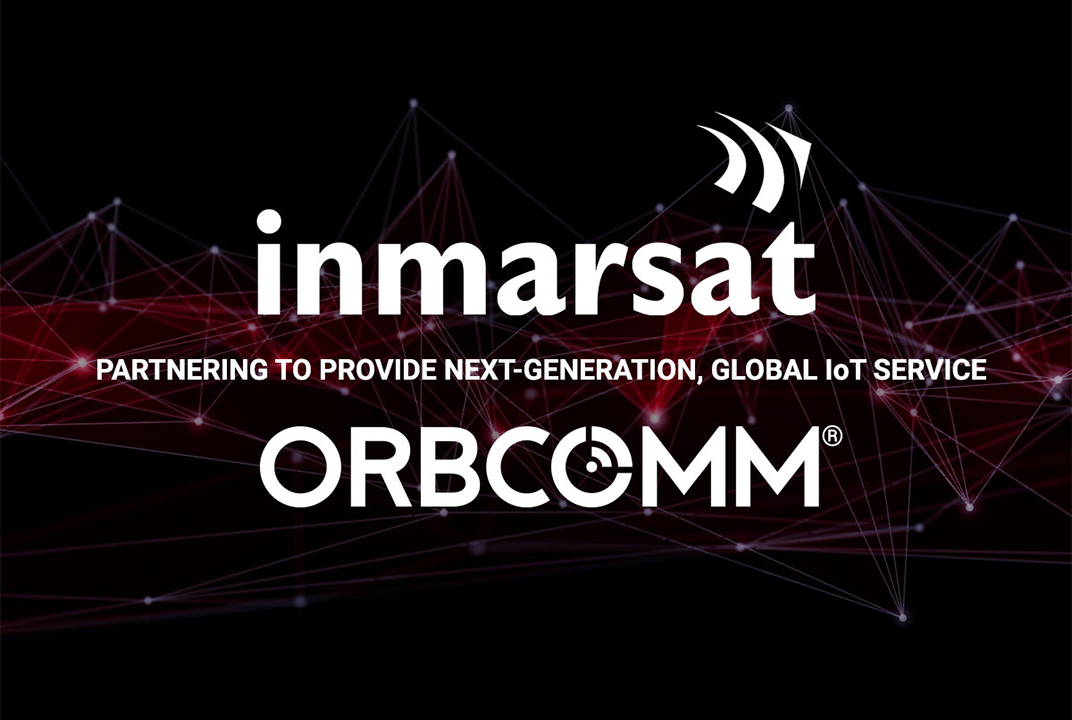| Globalstar Satellite Phone Support: |
World Wide Coverage MapGlobalCom provides this page to help customers decide which satellite phone best fits their needs. The coverage maps are important in deciding which phone will provide coverage in the areas you plan to travel. Globalstar provides global regional coverage everywhere in the U.S.and Canada as well as over 120 other countries with an affordable hand held or fixed site unit. World Class ServiceThis page includes downloadable documents which include “How to activate cellular service on my Globalstar Satellite Phone”. This provides information to your local cellular provider on how to activate cellular service on your Globalstar phone. The provider must use CDMA and 800MHz technology to be able to activate cellular service on the Globalstar phone. GlobalCom does not guarantee your local cellular provider will activate cellular service on the phone. It is at the discretion of the cellular provider Frequently Asked QuestionsPlease review our Frequently Asked Questions page which is very helpful in answering common questions concerning the use of satellite phone equipment. Globalstar Satellite Phone Equipment ManualsYou can also download Globalstar equipment manuals. This is very helpful when equipment manuals are lost. Globalstar Optimum Satellite Availability ToolSupport Documents: |
Satellite connectivity is provided by Inmarsat’s Broadband Global Area Network (BGAN) service, which works through Inmarsat’s solely owned and operated, global L-band network. Alphasat I-XL carries a commercial payload for Inmarsat - a new generation of advanced geomobile communications payload in L-band (1.6 GHz) that will augment Inmarsat’s BGAN (Broadband Global Area Network) service, enabling communications across Europe, Asia, Africa and the Middle East with increased capacity. What are the major drivers, challenges, and opportunities for the satellite connectivity market during the forecast period 2020 -2027? 5.8 Inmarsat Global Limited 5.8.1 Company Overview 5.8.1.
| Iridium Satellite Phone Support: |
| Urgent Iridium Update for Data Users Iridium Free Number Testing: Iridium has supplied us with a new way to test the Iridium satellite phone. To test an Iridium phone one must dial 001-480-752-5105. This is an invaluable tool to help customer confirm that their Iridium Satellite Phone is in working orders and it also offers quick tips on proper usage of the handset. This is all free of charge and one may check their phone operation at any time. Support Documents: Iridium has created a Phonebook Tool with the following capabilities:
World Wide Coverage Map |
| Inmarsat Products: |
| BGAN – World Wide Coverage Map Inmarsat Isatphone Pro Support:
|
Dublin, Jan. 25, 2021 (GLOBE NEWSWIRE) -- The 'Satellite Connectivity Market - A Global and Regional Analysis: Focus on Satellite Connectivity Solutions, End Users, Components, Application, and Operational Orbit - Analysis and Forecast, 2020-2027' report has been added to ResearchAndMarkets.com's offering.
The satellite connectivity industry analysis projects the market to have significant growth of CAGR of 13.09% based on the values during the forecast period from 2020 to 2027.
The North America region is expected to dominate the market by 2027 with a share of 43.21%. The North America region includes the U.S. and Canada, but the U.S. is expected to acquire a major share in 2027 due to the increase in the investment of companies in the country.
The satellite connectivity market has gained huge importance in the past few years. This is due to the rising demand for commercial satellite communications. Several space agencies and research organizations and industry players are engaged in establishing global satellite communications.
Scope of the Global Satellite Connectivity Market
The satellite connectivity market research provides the market information for segmentation such as the range of application of satellite communications based on its end-users and range of usable frequencies. The market is also divided depending upon the components and their operational orbits. The market analysis examines the satellite connectivity market outlook in terms of the trends, driving forces, opportunities, technological advancements, and competitive benchmarking, among others.

The report further takes into consideration the market and business dynamics, along with the detailed product contribution of the key players operating in the market.

Global Satellite Connectivity Market Segmentation
The report constitutes an extensive study of the satellite connectivity industry. The report largely focuses on providing market information for satellite communication covering various segments, components, frequencies, and regions. The frequency range included VHF, UHF, SHF, and EHF. The orbits were classified into low Earth orbit, middle Earth orbit, and geostationary orbit. The market is further segmented into three end use, namely government/civil, defense, and commercial.
The satellite connectivity market is segregated by region under four major regions, namely North America, Europe, APAC, and Rest-of-the-World. Data for each of these regions (by country) is provided.
Key Companies in the Global Satellite Connectivity Industry
Drivers Inmarsat Global Xpress
The key players in the global satellite connectivity market include Thales Group, Indra Group, Echostar, Viasat, General Dynamics, Inmarsat, Cobham PLC, L3Harris Technologies, Honeywell, Israel Aerospace Industries, Norsat, Aselasan, SitaOnAir, Collins Aerospace (UTC), Singtel, Telemar Group, Marlink, Leonardo S.p.A, SpaceX, Kongsberg and government space agencies such as the European Space Agency (France), and Indian Space Research Organisation (India).
Key Questions Answered in this Report:
- What are the major drivers, challenges, and opportunities for the satellite connectivity market during the forecast period 2020 -2027?
- How is COVID -19 affecting the growth of the global satellite connectivity market?
- What are the recent trends in the satellite connectivity market and shift in demand within the orbit segment?
- Who are the key players in the satellite connectivity market, and what is their competitive benchmarking?
- What is the expected revenue generated by the global satellite connectivity market during the forecast period 2020 -2027?
- What are the strategies adopted by the key players in the market to increase its market presence in the industry?
- Which application of the satellite connectivity and end-user is expected to dominate the market in 2027?
- What are the competitive strengths of the key players in the satellite connectivity market?
- What would be the aggravated revenue generated by the satellite connectivity market segmented by region (North America, Europe, Asia-Pacific, and Rest-of-the-World) by 2027?
Key Topics Covered:
Drivers Inmarsat Global
1 Markets
1.1 Industry Outlook
1.1.1 Impact of Futuristic Technologies on Satellite Connectivity Market
1.1.1.1 Introduction of Multicarrier Modulation (MCM) to Increase Operational Efficiency of Satellite Connectivity
1.1.1.2 Emergence of 5G Technology
1.1.1.3 Adoption of Laser Communication to Increase Data Transfer Rates
1.1.2 Regulatory Landscape
1.2 Patent Analysis
1.3 Impact of COVID-19 on Satellite Connectivity Market
1.3.1 COVID-19 Effect on Manufacturing Sector
1.3.2 COVID-19 Effect on Investment
1.4 Supply Chain Analysis
1.5 Business Dynamics
1.5.1 Business Drivers
1.5.1.1 Rising Dependency of Uninterrupted Satellite Connectivity Systems
1.5.1.2 Adoption of New Technologies like IoT and AI in Satellite Connectivity Market
1.5.1.3 Rising Use of Re-Usable Launch Systems and CubeSats To Reduce Satellite Launch Cost
1.5.2 Business Challenges
1.5.2.1 Short-Term Challenges
1.5.2.1.1 Slow Data Transfer Speed, Posing Market Challenges
1.5.2.2 Long-Term Challenges
1.5.2.2.1 Rising Obsolete Satellites to Pose Threat in Space
1.5.2.2.2 Decreasing Operational Space Slots in Low Earth Orbits Due to Mega Constellations
1.5.3 Opportunities
1.5.3.1 Connectivity Requirements in Rural Areas and Developing Countries
1.5.3.2 Increasing Demand for High Speed Secure Uninterrupted and Private Communication Network
1.5.3.3 Increasing Satellite Applications
1.6 Key Market Insights and Development
1.6.1 Key Strategies and Developments
1.6.1.1 Product Development and Innovation
1.6.1.2 Long Term Collaborations, Mergers, Acquisition, Investments
1.6.1.3 Other Development
Drivers Inmarsat Global Entry
2 Application
2.1 Global Satellite Connectivity Market (by End User)
2.1.1 Government/Civil
2.1.2 Defense
2.1.3 Commercial
2.2 Global Satellite Connectivity Market (by Application)
2.2.1 Earth Observation
2.2.2 Communication
2.2.3 Navigation/Surveillance
2.2.4 Technology Development
3 Products
3.1 Global Satellite Connectivity Market (by Frequency)
3.1.1 VHF
3.1.2 UHF
3.1.3 SHF
3.1.4 EHF
3.2 Global Satellite Connectivity Market (by Component)
3.2.1 Transponder
3.2.2 Receiver
3.2.3 Encoder/Decoder
3.2.4 Amplifier
3.2.5 RF Repeater
3.2.6 Antenna
3.2.7 Others
3.3 Global Satellite Connectivity Market (by Orbit)
3.3.1 LEO
3.3.2 MEO
3.3.3 GEO
4 Region
4.1 North America
4.2 Europe
4.3 Asia-Pacific
4.4 Rest-of-the-World
5 Markets - Competitive Benchmarking & Company Profiles
5.1 Competitive Benchmarking
5.2 ASELSAN A.S.
5.2.1 Company Overview
5.2.1.1 Role of ASELSAN A.S. in Satellite Connectivity Market
5.2.1.2 Product Portfolio
5.2.2 Corporate Strategies
5.2.2.1 Partnership and Collaboration
5.2.3 Strength and Weakness of ASELSAN A.S.
5.2.4 R&D Analysis
5.3 Cobham Limited
5.3.1 Company Overview
5.3.1.1 Role of Cobham Limited in Satellite Connectivity Market
5.3.1.2 Product Portfolio
5.3.2 Business Strategies
5.3.2.1 New Product Launch
5.3.3 Strength and Weakness of Cobham Limited
5.3.4 R&D Analysis
5.4 Echostar Corporation
5.4.1 Company Overview
5.4.1.1 Role of Echostar Corporation in Satellite Connectivity Market
5.4.1.2 Product Portfolio
5.4.2 Business Strategies
5.4.2.1 Satellite Developments
5.4.3 Strength and Weakness of Echostar Corporation
5.4.4 R&D Analysis
5.5 Honeywell International Inc.
5.5.1 Company Overview
5.5.1.1 Role of Honeywell International Inc. in Satellite Connectivity Market
5.5.1.2 Product Portfolio
5.5.2 Corporate Strategies
5.5.2.1 Partnership
5.5.3 Strength and Weakness of Honeywell
5.5.4 R&D Analysis
5.6 General Dynamics
5.6.1 Company Overview
5.6.1.1 Role of General Dynamics in Satellite Connectivity Market
5.6.1.2 Product Portfolio
5.6.2 Corporate Strategies
5.6.2.1 Partnership
5.6.2.2 New Product Launch
5.6.3 Strength and Weakness of General Dynamics
5.6.4 R&D Analysis
5.7 Indra Sistemas, S.A.
5.7.1 Company Overview
5.7.1.1 Role of Indra Sistemas, S.A.in Satellite Connectivity Market
5.7.1.2 Product Portfolio
5.7.2 Business Strategies
5.7.2.1 Long Term Contract
5.7.3 Strength and Weakness of Indra Sistemas, S.A.
5.7.4 R&D Analysis
5.8 Inmarsat Global Limited
5.8.1 Company Overview
5.8.1.1 Role of Inmarsat Global Limited in Satellite Connectivity Market
5.8.1.2 Product Portfolio
5.8.2 Business Strategies
5.8.2.1 Business Collaboration
5.8.3 Strength and Weakness of Inmarsat
5.8.4 R&D Analysis
5.9 Israel Aerospace Industries
5.9.1 Company Overview
5.9.1.1 Role of IAI in Satellite Connectivity Market
5.9.1.2 Product Portfolio
5.9.2 Business Strategies
5.9.2.1 Product Developments
5.9.3 Strength and Weakness of IAI
5.9.4 R&D Analysis
5.10 L3Harris Technologies, Inc.
5.10.1 Company Overview
5.10.1.1 Role of L3Harris Technologies in Satellite Connectivity Market
5.10.1.2 Product Portfolio
5.10.2 Business Strategies
5.10.2.1 Product Developments
5.10.3 Strength and Weakness of L3Harris technologies, Inc.
5.10.4 R&D Analysis
5.11 Myriota
5.11.1 Company Overview
5.11.1.1 Role of Myriota in Satellite Connectivity Market
5.11.1.2 Product Portfolio
5.11.2 Business Strategies
5.11.2.1 Partnership
5.11.3 Strength and Weakness of Myriota
5.12 Norsat International Inc.
5.12.1 Company Overview
5.12.1.1 Role of Norsat International Inc.in Satellite Connectivity Market
5.12.1.2 Product Portfolio
5.12.2 Business Strategies
5.12.2.1 New Product Launch
5.12.3 Strength and Weakness of Norsat International Inc.
5.13 Space Exploration Technologies Corp. (SpaceX)
5.13.1 Company Overview
5.13.1.1 Role of SpaceX in Satellite Connectivity Market
5.13.1.2 Product Portfolio
5.13.2 Business Strategies
5.13.2.1 Product Innovation
5.13.3 Strength and Weakness of SpaceX
5.14 Thales Group
5.14.1 Company Overview
5.14.1.1 Role of Thales Group in Satellite Connectivity Market
5.14.1.2 Product Portfolio
5.14.2 Business Strategies
5.14.2.1 Product Developments
5.14.3 Strength and Weakness of Thales Group
5.14.4 R&D Analysis
5.15 Viasat, Inc.
5.15.1 Company Overview
5.15.1.1 Role of Viasat, Inc.in Satellite Connectivity Market
5.15.1.2 Product Portfolio
5.15.2 Business Strategies
5.15.2.1 Product Developments
5.15.3 Strength and Weakness of Viasat, Inc.
5.15.4 R&D Analysis
6 Research Methodology
For more information about this report visit https://www.researchandmarkets.com/r/h4rnaa

